
Amazon Prime Case Study
Introduction:
If you’re not already part of Amazon Prime, you might be curious about what it offers and whether it’s worth the investment. Essentially, Amazon Prime is a subscription service that grants members access to various benefits. These include speedy shipping, exclusive deals, free streaming of movies, and more.
For many, the main draw of Amazon Prime is its fast shipping options. However, the recent increase in its subscription fees—from $119 to $139 annually and from $12.99 to $14.99 monthly—makes it a less enticing prospect, especially when many are trying to cut back on expenses.
With over 200 million members already on board, joining Amazon Prime might seem like a big commitment. We understand if you’re hesitant. To help you decide whether it’s right for you, we’ll delve into what exactly Amazon Prime offers and all the perks you stand to gain as a member. From access to exclusive deals and promotional codes to the convenience of rapid shipping, we’ll cover everything you need to know about Amazon Prime.
Early History
In 2005, Amazon introduced Amazon Prime, a membership program offering free two-day shipping on eligible purchases within the contiguous United States for an annual fee of $79 (which equates to about $123 in 2023). Additionally, members enjoyed discounted rates for one-day shipping. The program expanded internationally, launching in Germany, Japan, and the United Kingdom in 2007; in France (branded as “Amazon Premium”) in 2008; in Italy in 2011; in Canada in 2013; in India in July 2016; in Mexico in March 2016; in Australia in June 2018; in Turkey in September 2020; in Sweden in September 2021; in Poland in October 2021; and in Egypt in July 2022. Furthermore, Amazon Prime has been made available in Ireland, with a new fulfilment centre opening in Dublin in 2022. By October 2021, Prime membership had extended to 22 countries across North America, Europe, and the Asia-Pacific region.
What is Amazon Prime?
Amazon Prime is a membership program that requires a payment of $139 annually or $14.99 monthly. Subscribers gain access to numerous benefits. The standout feature is the complimentary one- or two-day shipping offered on the majority of items sold by Amazon. With the company disclosing that it boasts over 200 million paid Prime members globally, this information should provide clarity if you’ve been pondering about Amazon Prime.
Amazon Prime Video
Amazon Prime Video stands out as one of the top perks available to Amazon Prime members. It provides unrestricted access to streaming an extensive collection of movies and TV shows for both paying members and those on a free trial in the U.S. and Puerto Rico. Additionally, subscribers have the option to enhance their viewing experience by adding subscriptions to premium channels such as Showtime, Starz, A&E, AMC, and many others. Notably, Prime members can now enjoy a 30-day trial of Paramount Plus. Amazon continually enriches its Prime Video library with fresh content to keep users engaged. If you’re considering traveling abroad, be aware that Amazon restricts viewing in certain regions, but utilizing an Amazon Prime VPN can help bypass these limitations, allowing you to enjoy your content from anywhere.
It’s important to note, however, that Amazon recently introduced advertisements on Prime Video. To remove these ads, Prime members have the option to subscribe to an ad-free experience for an additional $2.99 per month.
Amazon Prime Gaming
In 2020, Amazon renamed its Twitch Prime service to Amazon Prime Gaming. This change came with no additional cost to Amazon Prime subscribers, who automatically gained access to Prime Gaming. The key distinction between the two is that Prime Gaming can be accessed without requiring a Twitch account, which was a prerequisite for Twitch Prime.
Amazon Prime Gaming serves as a fantastic benefit tailored for gaming enthusiasts. Prime members can access the Prime Gaming landing page, where they’ll discover exclusive in-game rewards, complimentary monthly PC games that remain in their possession indefinitely, and a free monthly Twitch subscription. For those familiar with Twitch Prime, Amazon Prime Gaming essentially represents a rebranding of the beloved service. If you’re already an Amazon Prime subscriber, you automatically have access to Amazon Prime Gaming as part of your membership, so make sure to explore its offerings right away.
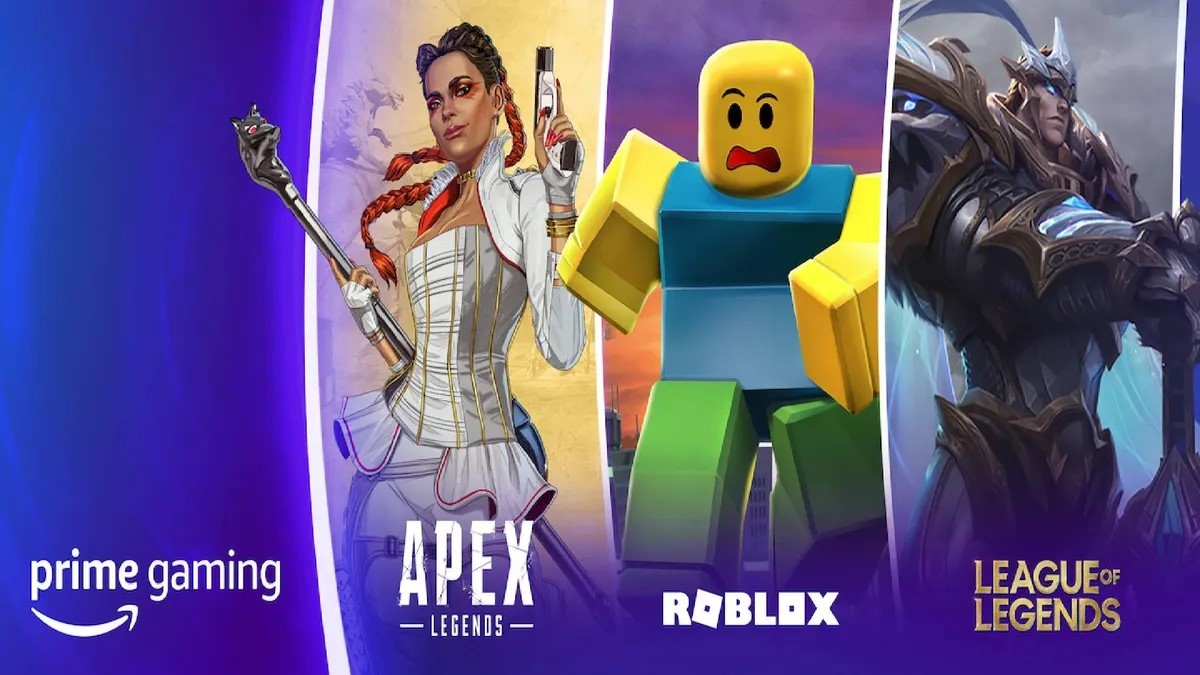
Prime Music
Prime Music is a music streaming service provided ad-free as part of the standard Amazon Prime membership. It was launched in 2007. In November 2022, significant enhancements were made to the music catalog, and the service’s style was transformed to resemble platforms like Pandora or traditional radio broadcasting. Instead of playing the exact song selected by users, Prime Music now plays something similar when a song is chosen. Users have the option to skip a limited number of songs per hour if they dislike the substituted track. This adjustment was implemented to strengthen Amazon’s position against competition, particularly from Walmart.
Amazon also offers a separate subscription service known as Amazon Music, priced at $8.99 per month for Prime members and $9.99 per month for non-Prime members. Subscribers to Amazon Music Unlimited have the freedom to select specific songs without being redirected to similar tracks or artists.
Despite Amazon’s offerings, its music streaming services hold a 10% market share, making it considerably less popular than competitors like Spotify and Apple Music.
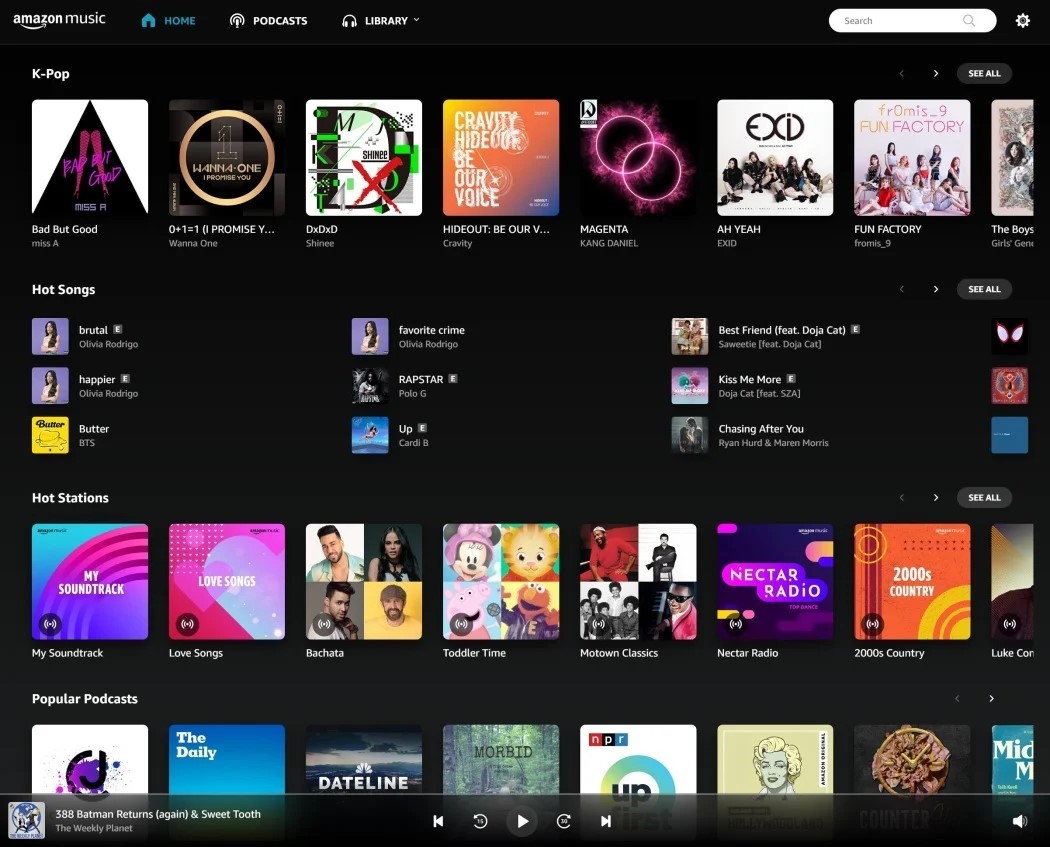
Prime Reading
Starting from October 2016, Prime members in the United States gained access to a changing selection of Kindle e-books via Prime Reading. Additionally, some magazines and travel guides are accessible through this service. It’s important to note that Prime Reading is distinct from Kindle Unlimited and Kindle First, both of which remain available, as well as the now-discontinued Kindle Owners Lending Library, which was phased out in January 2021.
Prime Day
On July 15, 2015, Amazon launched its first-ever Prime Day to celebrate the website’s 20th anniversary. This event is exclusive to Amazon Prime members and offers a wide range of sales and deals, initially promising more discounts than Black Friday. However, the first Prime Day received criticism for offering discounts on items that weren’t in high demand. Some people even joked that it felt like a “yard sale”. Walmart chimed in, saying customers shouldn’t have to pay a subscription fee for good deals. Despite this, Amazon defended Prime Day, highlighting its huge number of orders compared to Black Friday in 2014.
In the same month, Amazon Prime announced a partnership with the hosts of BBC’s Top Gear to create The Grand Tour for Amazon Prime Video, released in 2016.
Prime Day has grown significantly since then, with a 60% increase in orders reported in 2016. In 2018, the event was preceded by a concert featuring Ariana Grande, streamed on Amazon Video and Twitch. The following year, another concert with Taylor Swift and other artists was streamed exclusively for Prime members.
However, Prime Day has faced criticism and protests, particularly in 2018 when some Amazon employees went on strike. This led to calls for boycotts.
Due to the COVID-19 pandemic, Prime Day was postponed in the US and Canada in 2020 and rescheduled for October. India’s Prime Day took place in August. In May 2021, Prime Day in Canada was postponed indefinitely due to COVID-19.
Business model of Amazon Prime
‘Amazon Prime’ has become ubiquitous, known in every household. Nearly every home I’m familiar with boasts at least one Prime membership. We’ve all tapped into the benefits, borrowing a relative’s or friend’s membership to ensure our orders arrive within two days. Amazon Prime has undeniably woven itself into our daily lives over the past decade, highlighting our collective appreciation for convenience and simplicity as humans.
Amazon Prime has emerged as the world’s largest and most profitable subscription service, encompassing a wide array of benefits such as Free Shipping (including same-day, 2-day, or even 2-hour delivery), Prime Video, Prime Reading, Prime Music, Gaming perks, enticing discounts, and more. It serves as an all-inclusive pass granting access to Amazon’s extensive selection of products and services. Amazon Prime has ingeniously crafted a business model that caters to every aspect of its users’ daily lives.
With a staggering 200 million Prime members spanning 20 countries, including 148 million in its native country, the United States, Amazon Prime continues to expand globally. This underscores the profound impact Amazon has achieved through its subscription service since its inception in 2005, initially offering solely a free 2-day shipping service.
The foundation of the Amazon Prime business model traces back to 2002 with the inception of FastTrack, aimed at expediting order processing and minimizing shipment duration. FastTrack serves as a pivotal performance measure for vendors, gauging the percentage of customers who view an item as Prime Eligible.
This metric holds significance for third-party sellers, who constitute 56% of Amazon’s marketplace, as it considers factors like an item’s availability and its condition upon arrival at Amazon’s fulfilment centre. A higher FastTrack rate translates to a greater number of items being classified as Prime Eligible.
In 2020, Amazon generated approximately $80.5 billion in revenue from third-party seller services, marking a nearly 50% surge from the preceding year.
Jeff Bezos, known as the wealthiest individual currently venturing into space exploration, has always demonstrated visionary foresight. He envisioned Amazon Prime not merely as a run-of-the-mill subscription service but as a strategic tool to solidify customer loyalty within Amazon’s ecosystem of products and services.
Despite apprehensions from various stakeholders, who were concerned about potential impacts on shipping revenue—a vital component of profit margins—Jeff Bezos remained steadfast in his vision. He understood the inevitability of short-term setbacks and urged his team to adhere to their plans, prioritising the long-term success of the Prime Subscription model over short-term gains. As articulated in his open letter to the world:
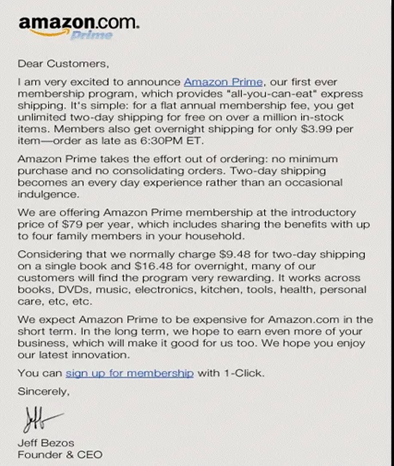
Amazon Prime has become a common part of households, with almost everyone having a membership. This shows that we all prefer things that are easy and convenient.
The Amazon Prime membership has grown into the biggest and most successful subscription service globally. It offers lots of benefits like fast shipping, streaming movies and shows, gaming perks, and good discounts. It’s like a one-stop shop for all of Amazon’s stuff, making life easier for users.
There are a whopping 200 million Prime members across 20 countries, with 148 million in the US alone. Amazon Prime has changed how we shop online since it started in 2005, mainly focusing on quick 2-day shipping at the beginning.
The idea for Amazon Prime started back in 2002 with something called FastTrack. It was all about speeding up how quickly orders were processed and shipped. FastTrack is really important for sellers on Amazon because it shows how many customers see their products as Prime Eligible. This is especially big for third-party sellers who make up more than half of Amazon’s marketplace.
Jeff Bezos, the guy behind Amazon, didn’t just want Prime to be a regular subscription service. He saw it as a way to make customers stick with Amazon and use its services more. Even though some people weren’t sure about it at first, Bezos stuck to his plan, thinking about the long-term success of Prime rather than just short-term wins.
And it turns out Bezos was right. Prime members spend a lot more money each year compared to non-members. This helps Amazon figure out how much money they’ll make from each Prime member by looking at how they shop. In 2018, Amazon made about $232 billion from selling stuff, with Prime members spending around $1,400 each year, which is way more than non-members.
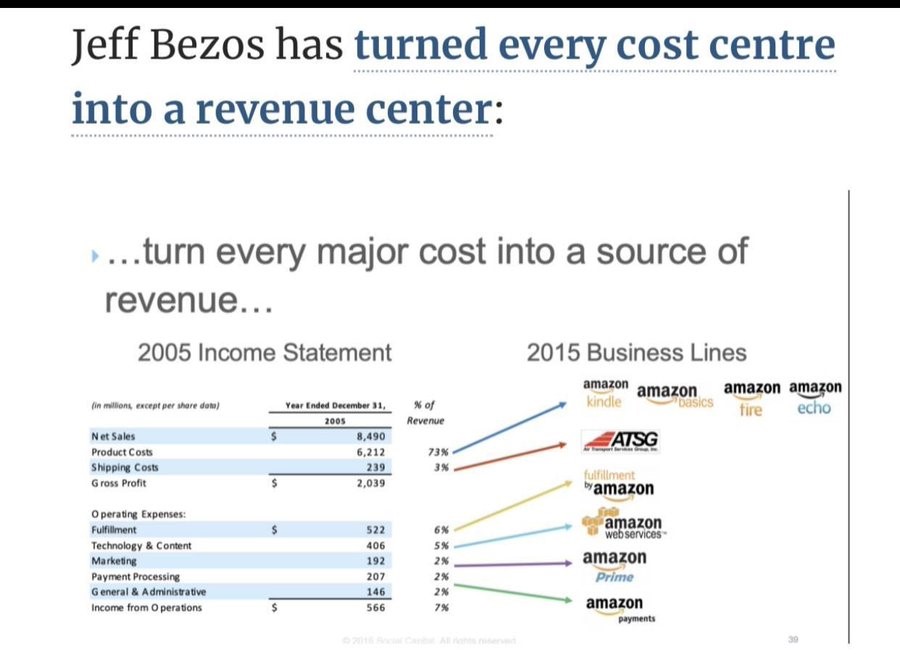
In its announcement of the last quarter results for 2020, Amazon revealed that its total net sales amounted to $89 billion during the pandemic period. Within this, the sales from all subscription services, which include fees from Amazon Prime memberships, digital video, audiobooks, e-books, and other subscription services, totaled $25.21 billion in 2020, excluding revenues from AWS.
Prime day Sale
In celebration of the 20th anniversary of the Amazon website, Prime Day was introduced in 2015 as an exclusive annual event for Prime members. During this event, significant discounts are offered on a wide range of products and services, essentially creating a new version of the traditional “Black Friday Sale.” Despite the challenges posed by the pandemic, the 2021 Prime Day saw an impressive turnout, with over 250 million items purchased over the course of the 48-hour event. Sales for Prime Day surged to $11.19 billion, marking a remarkable increase from previous years.
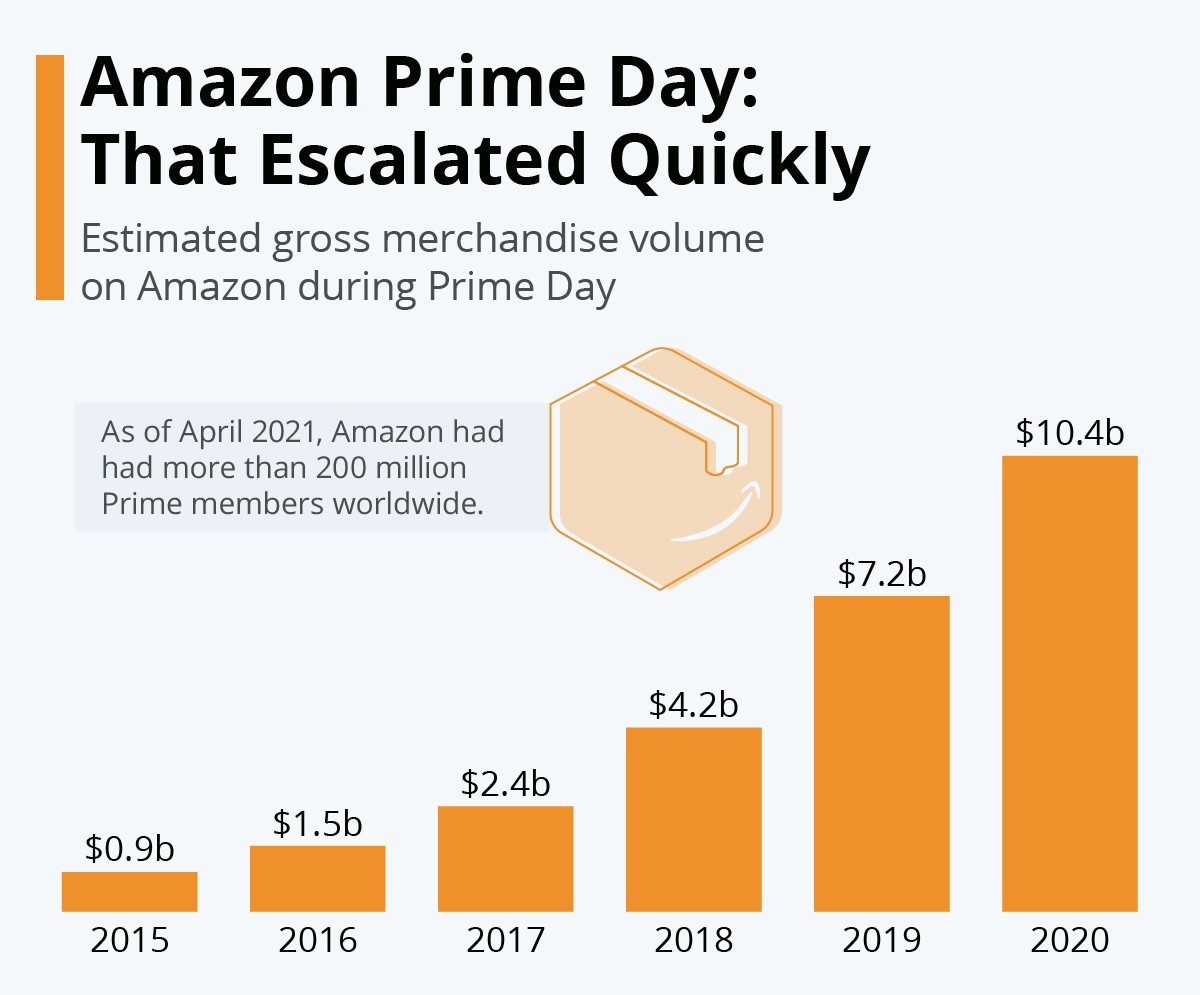
Competition
Various retailers, both big and small, offer subscription services to customers, creating competition for market share. Amazon competes directly with these retailers and has emerged as a dominant force in recent years, capturing a significant portion of the market. Key rivals in the retail sector include Target, Walmart, Costco, and Best Buy. In the realm of subscription services, competitors include Alibaba (AliExpress), Flipkart, Netflix, Apple, and Google.
When third-party vendors sell their products on the Amazon platform, they pay commission fees and other fulfilment costs, which contribute to Amazon’s sales and profits. Jeff Bezos has identified eBay as their primary competitor in terms of third-party sellers.
India has become a crucial growth market due to the rising middle-class sector and increased spending. Amazon entered the Indian market in 2016 and has been highly successful in competing with local giants like Flipkart and Myntra. The e-commerce landscape in India is fiercely competitive, with both local and international companies vying for market share. In 2017, Amazon India emerged as the leading online marketplace with over $500 million in sales. Today, it ranks among India’s top five e-commerce platforms, with sales nearing $10 billion.
On a global scale, Alibaba’s e-commerce platform AliExpress successfully competed with Amazon China, leading to the closure of Amazon’s China store after 15 years of operation in the country. Established retailers like Walmart and Sears struggled to keep up with Amazon’s rapid market takeover, attributed to its advanced technology and expertise.
In a recent milestone, Amazon outsold Walmart for the first time, marking Amazon as the largest retailer outside China. This marks a significant shift, as Walmart had held the title of the biggest US retailer since 1990. This illustrates the intense competition Amazon faces and raises concerns about its potential to become a monopoly in the future.
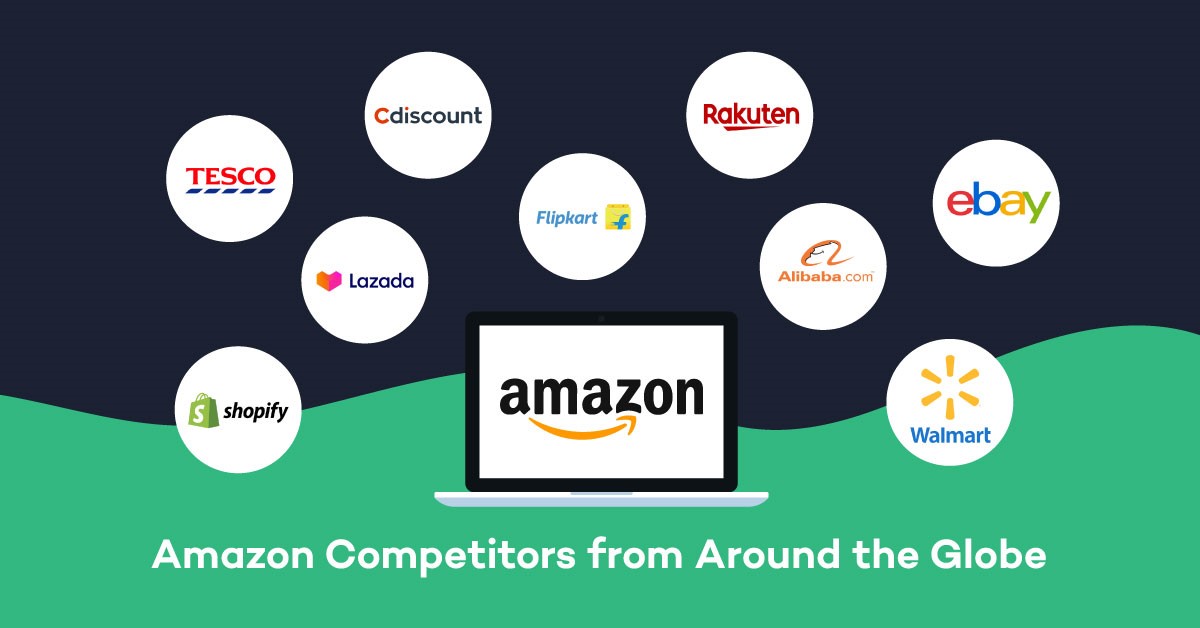
SWOT Analysis of Amazon Prime Video
Strengths of Amazon Prime Video
Global Reach: Amazon Prime Video has a worldwide presence, boasting a vast user base of 175 million across the globe. With content spanning various cultures and interests, Prime Video offers a diverse selection of shows and movies for streaming and purchase worldwide.
Easy Accessibility: Prime Video is incredibly accessible, allowing users to enjoy content anytime, anywhere. The platform can be accessed through the web or the Prime Video app, available on a wide range of devices, ensuring seamless viewing experiences.
Affordable Services: Unlike other OTT platforms, Amazon Prime offers a comprehensive membership that includes ad-free music, unlimited free shipping on eligible purchases, and special access to exclusive deals, eliminating the need for separate subscriptions.
Fantastic Entertainment Platform: Amazon Prime Video stands out as one of the premier OTT platforms, offering prime members a plethora of entertainment options. From exclusive Amazon Originals to regional and blockbuster Bollywood and Hollywood films, Prime Video is hailed as an exceptional source of entertainment, enriching the brand’s appeal.
Continuous Video Playback: Prime Video features an adaptive video streaming platform that ensures optimal video quality based on available bandwidth. Additionally, viewers have the flexibility to select their preferred video quality for an enhanced viewing experience.
Smart Search: Amazon Prime Video excels in providing accurate search results with rapid auto-complete suggestions, enhancing user convenience and satisfaction during content discovery.
Weaknesses of Amazon Prime Video
Limited Original Content: Unlike its competitors like Netflix, Amazon Prime Video lacks a robust library of original content.
Disorganised Interface: The main interface of Amazon Prime Video is cluttered and less user-friendly compared to other major streaming platforms. The brand’s user experience, simplicity, and visual presentation are lacking.
Platform Issues: Amazon Prime Video encounters several UI issues, such as difficulties accessing the “now watching” section on various platforms, slow content search, and challenges in finding specific material.
Disorganised Platform: The content on Amazon Prime Video is not well-organised, with a mix of paid and unpaid content creating confusion for users.
Limited Market Presence: Amazon Prime Video has struggled to gain market traction compared to its competitor Netflix, which boasts a user base of over 222 million. Additionally, Netflix offers a wider variety of content compared to Prime Video, further limiting its appeal to users.
Opportunities for Amazon Prime Video
Acquisitions: A significant opportunity for the company lies in acquiring the rights and assets of other major media companies such as Marvel and Fox Star Studios. This strategic move would fuel the company’s growth and expansion. Additionally, collaborating with top-tier companies could further enhance its reach and impact.
Subscription Price Reduction: Recognizing the preferences of diverse demographics, particularly the youth and homemakers, the company could attract more customers by lowering subscription prices. Offering a wide range of sports content, original series, sitcoms, and daily soaps at more affordable rates would appeal to these audiences.
Educational Content: In response to the increasing demand for digital education, the company could diversify its content offerings by incorporating educational movies. This initiative would enable individuals, especially children, to acquire new skills and knowledge from the comfort of their homes, similar to the digital marketing courses offered by IIDE through online videos and live sessions.
5G Integration: Embracing 5G technology presents a promising opportunity for Amazon Prime Video to enhance its streaming capabilities. With higher throughput and improved data speed and bandwidth, Prime Video could deliver higher-quality streaming experiences and cater to the needs of consumers seeking seamless connectivity on the go.
Subscriber Expansion: Expanding its membership base is crucial for Prime Video to broaden its reach and impact. With the ongoing trend of online streaming and cord-cutting, there is a significant opportunity to attract new subscribers, both domestically and internationally. Prime Video, already popular in the United States, should explore avenues for global expansion.
Third-Party Entry Points: Leveraging third-party entry points, such as devices, smart TVs, and projectors, presents a lucrative opportunity for Prime Video. By collaborating with manufacturers to integrate its platform into a wide range of devices, Prime Video can enhance accessibility and reach new audiences. Exploring new market segments and distribution channels would further solidify its position in the streaming industry.
Threats to Amazon Prime Video
Intense Competition: Amazon Prime Video faces heightened competition as new streaming services enter the market, posing a threat to its market share. Competitors such as Zee5, Sony Liv, Hotstar, and Netflix vie for viewership, intensifying the competitive landscape.
Regulatory Challenges: The technology sector is subject to a myriad of regulations and legal hurdles, which pose a risk to Prime Video’s reputation and operations. Some countries have restricted access to its services, impacting its subscriber base and growth prospects. Prime Video must navigate various legal complexities to ensure compliance and maintain its market presence.
Piracy Threat: Piracy poses a significant threat to Prime Video, as unauthorised free streaming services undermine its revenue potential and subscriber base. Combating piracy is crucial to protecting Prime Video’s content and revenue streams.
Youth Addiction: The growing addiction of teenagers to OTT platforms poses a reputational risk to Prime Video, as concerns arise about its impact on academic performance and overall well-being. This trend may affect parental perceptions of OTT platforms negatively.
Competitive Pricing: Recent price reductions by competitors like Netflix make their subscriptions more appealing to consumers, potentially diverting viewership away from Prime Video. Fluctuations in competitor pricing can influence consumer choices and affect Prime Video’s market position.
Unlocking Effect: The shift from lockdown restrictions to unlocking measures has led to changes in consumer behaviour, impacting Prime Video’s revenue streams. As people return to pre-lockdown activities, such as cinema visits, the demand for OTT platforms may decrease, affecting Prime Video’s revenue and viewership metrics.
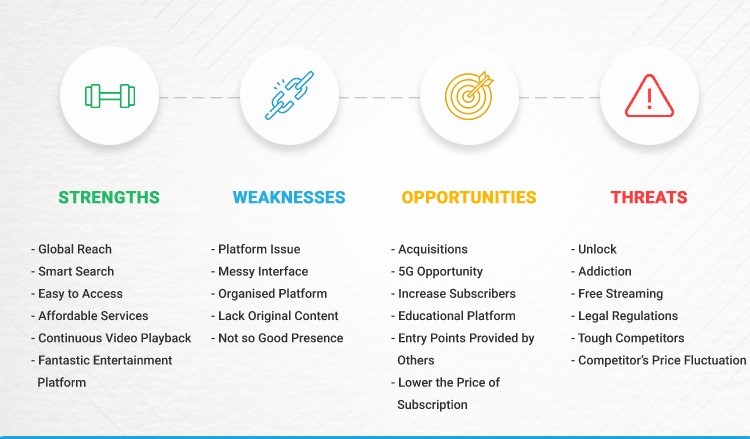
Conclusion
In conclusion, Amazon Prime’s journey shows how it started as a fast shipping service and grew into a big entertainment platform. It’s been smart in adding new features, like getting rights to popular movies and using advanced technology. But, it’s also facing tough competition and some rules. Still, Amazon Prime keeps finding ways to improve and adapt, showing it’s a big player in the entertainment world. With its focus on customers and resources, Amazon Prime is likely to keep leading the way in streaming and entertainment.





